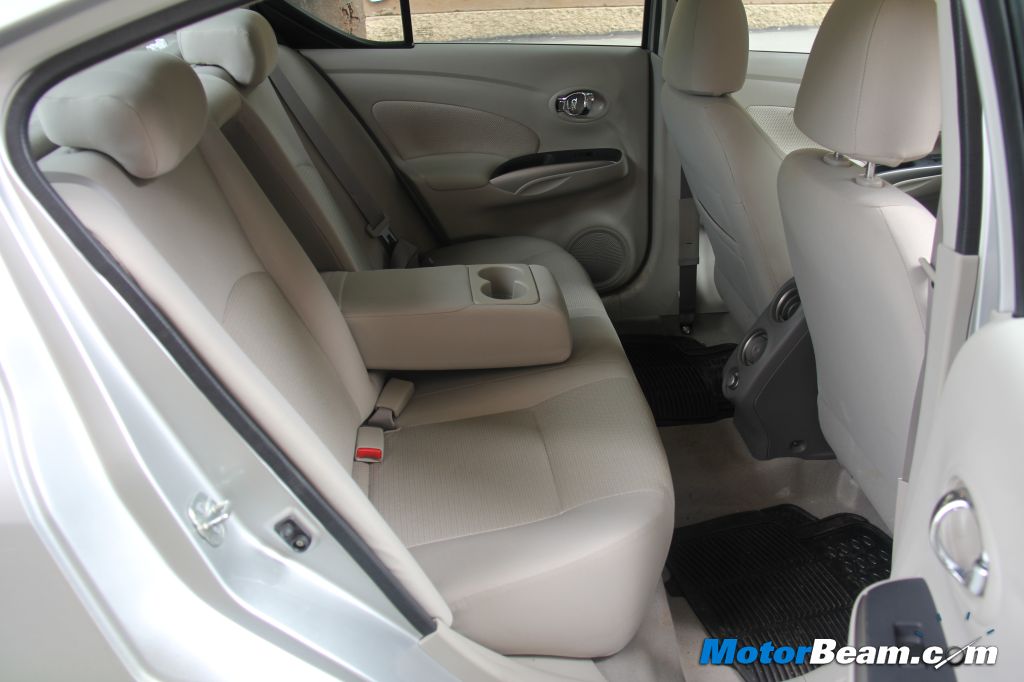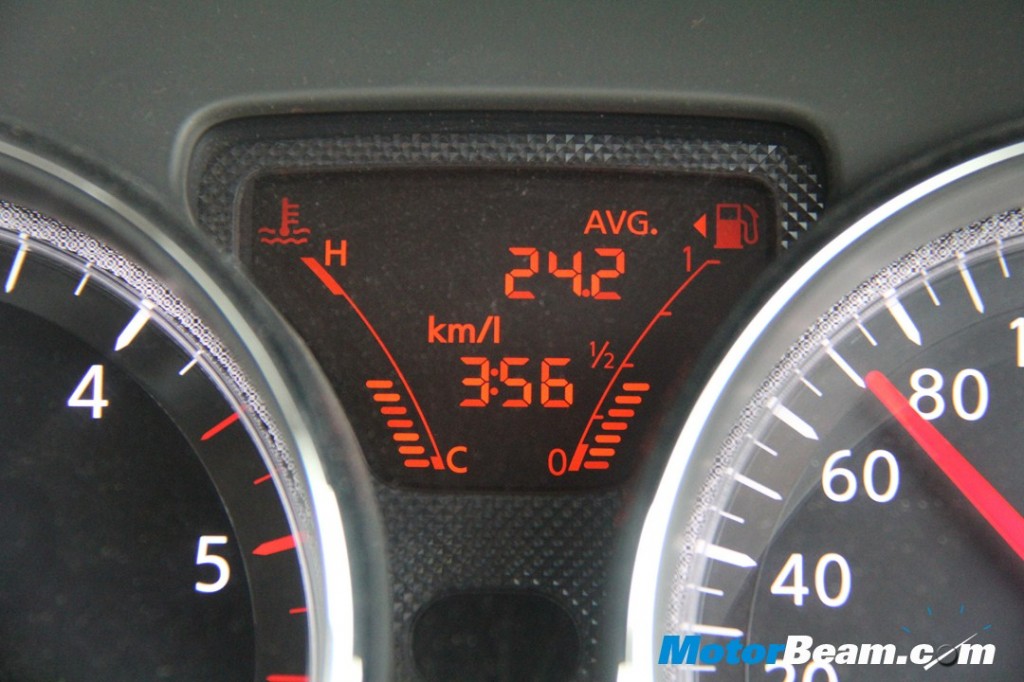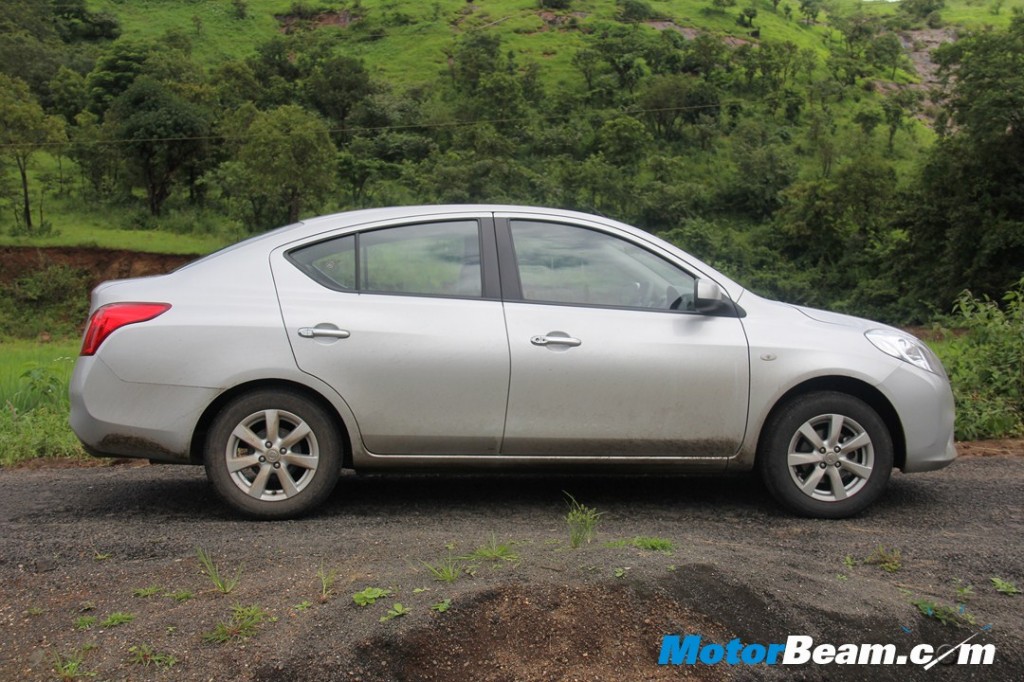Nissan Sunny Long Term
Car Tested – Nissan Sunny dCi XV
Kms Done: 3083.8
Test Started at – 1936 kms
Test Concluded at – 5019 kms
Mileage – 16.87 km/l (mostly city running)
20.19 km/l (Best)
13.28 km/l (Worst)
Fuel Consumed – 182.8 liters
Fuel Cost – Rs. 9145/-
Major Repair – None
Service Cost – None during the test
The Nissan Sunny has a history which goes back more than 45 years when it first made its appearance as the Datsun 1000. After having launched the Sunny in petrol avatar, Nissan was quick to see that the demand for the diesel variant by far surpassed the one for gasoline. Based on the ‘V’ platform, the same one on which the Micra is based, the Sunny is Nissan’s best selling model in India till date, with sales having surpassed those of the Micra, in spite of the hatchback market being considerably larger. We use the Nissan Sunny as our daily car for 3000 kms and find out how it fares in a long term test.
The Nissan Sunny will not set the charts on fire in the styling department, blame it on the bland exterior styling but its inert practicality is what makes it a good preposition for buyers. In terms of size alone, its seems to be a segment higher than it actually is. The Sunny’s biggest asset is its interior space and this comes by virtue of its long wheelbase. Interior room is the the best in the segment, that too by quite a margin. The only other car which prides itself of the same is the Skoda Superb, but comes at double the price. The seats are comfortable and the Nissan Sunny is the ideal car if you like to be ferried around. Rear legroom is an absolute steal and you can literally cross your legs and sit. Over long drives, the seats ensure good comfort throughout, however, rear under thigh support is lacking for tall passengers.
The audio system is about average and there is provision for AUX and CD. USB is not supported by the audio system and we reckon that it will be provided when the Sunny undergoes its mid-life facelift.
Air conditioning unit is straight out of the Micra and this is beneficial as part sharing brings down costs. With a large glass area, the Sunny will heat up much more when standing out in the sun, however the AC is effective and cools quickly. The rear bench gets a cooling fan which seems to be a dud concept but is quite effective when used smartly. Direct the front vents into the rear fan intake the it works almost as good as an air conditioning unit.
Large window size also helps in amplifying the space inside. The cabin feels more roomy and airy. In fact, we used the Sunny as a tracking car for most of the shoots while it was with us and the rear seat surely was a boon. Amongst other activities, the Sunny was also the lead vehicle for the MotorBeam Mmet held in Lonavala (more on the meet here).
The rear parcel shelf has a niche which holds items like a tissue paper box ensuring it does not slide out in an event of emergency braking. The iKey is a feature which surely ends up spoiling you. The key can be tucked away in your pocket or your bag, as long as its on you, the door will open by tugging on the request sensor on the door handle. Though many times we noticed that if you have a mobile phone in the same pocket as the iKey, the sensor won’t recognize it until you move the phone away. Push button start works well though it did take its own sweet time to start the engine on a few occasions.
The Sunny gives you six different speed options for the wiper motor ensuring that no matter how heavy or light the rain is, your windshield is clear all the time.
They say that in most cases beauty lies within, so is the case of the Nissan Sunny. Under the hood is the renowned Renault K9K motor churning up a juicy cocktail of mileage and performance. This 85 PS oil burner is perhaps the best in the K9K line-up and delivers the perfect blend of performance and mileage. Power delivery is linear and is available through out the rev band with a strong mid-range. Even with five heavy passengers on board and a boot cramped with luggage, neither did the Sunny run out of breath nor did it come precariously close to kissing its underbelly to the ground. The Renault K9K, like most Renault engines is known for mileage and drive-ablity.
It not always about hardcore performance and as we saw in the last three Formula 1 seasons, the Renault engine was not the fastest of them all and yet won the championship for the Red Bull Racing team. The instrument cluster reading is almost too good to be true, but in the real world the Sunny returned a best mileage of 20.19 km/l in a Mumbai – Kolad highway run (with five people on board and a boot full of luggage). In the city, traffic jams and insane traffic led to a worst mileage of 13.28 km/l. Overall the Sunny was continuously delivering around 16 – 17 km/l, which is brilliant for a car of this size.
Our test car was relatively new when it was inducted into our long term test fleet, having only around 1900 kms on the odometer, the gearbox did have a notchy feel to it. It did smoothen up as the kilometers ticked, but there was still a hint of notchiness when we returned the car.
The steering is very light and this is a boon when you are carving your way through traffic but out on the open highway, there isn’t much feedback. As the weight adds on, the handling becomes a bit more predictable but this vehicle for sure is no handler, the Sunny has been designed for comfort and and does pretty well in that regard. Even when its fully loaded, the Sunny did not bottom out or kissed the speed breakers. Ground clearance is enough to keep the paint on the car and the Bridgestone tyres offer sufficient grip, they are far superior to most of the Indian equivalents.
After having driven the Sunny for more than 3000 kms, you are left nothing short of impressed. It’s not the best looking car but offers oodles of practicality and complete value for money. At Rs. 10.73 lakhs (on-road, Mumbai), the top end diesel Sunny is much cheaper than most cars in the segment and is also the most spacious of the lot. The K9K series dCi engine delivers the best combination of mileage and efficiency. If you are a back seat passenger, the Sunny will impress you with its luxurious rear bench. If you spend most of your time behind the wheel, the Sunny certainly won’t drill a hole in your pocket, no wonder, it’s the best selling car from Nissan till date.
Nissan Sunny Cost Of Service
1. Brake Oil (1 litre) – Rs. 615/-
2. Engine Oil – Rs 891 (10K, 30K Km), Rs 1431 (20K, 40K Km)
3. Oil Filter – Rs 404
4. Diesel Filter – Rs 776
5. Coolant – Rs. 185/-
6. Brake Pad – Rs. 2306.25/-
7. Front bumper (without painting) – Rs. 2646.50/-
8. Rear bumper (without painting) – Rs. 2450/-
9. Headlamp Assembly – Rs. 3094.22/-
10. Tail lamp Assembly – Rs. 1842.54/-
Service Interval – 10,000 kms or 6 months (whichever is earlier).
Further Reading –
Nissan Sunny Petrol Review
Nissan Sunny Diesel Review



















